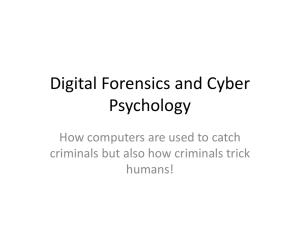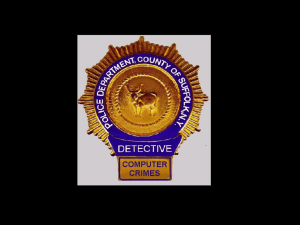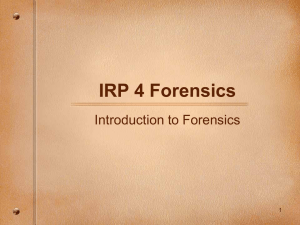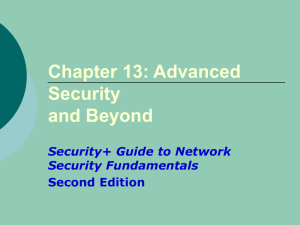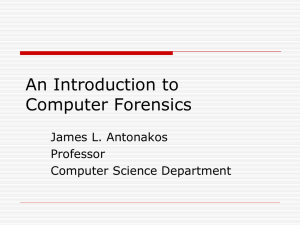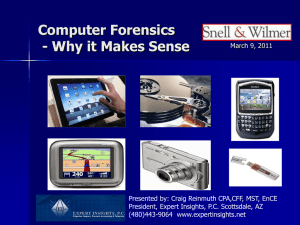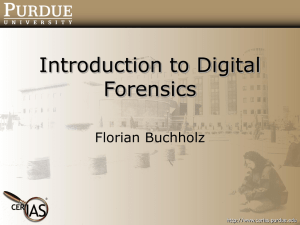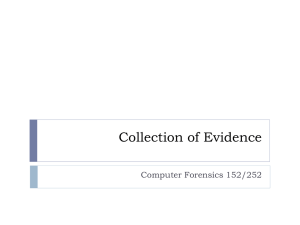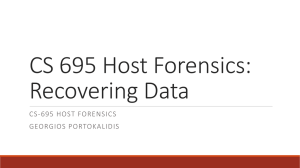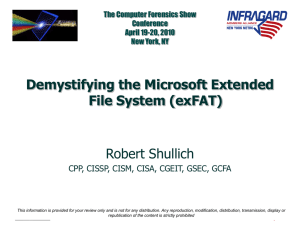MadliKajuSlides
advertisement
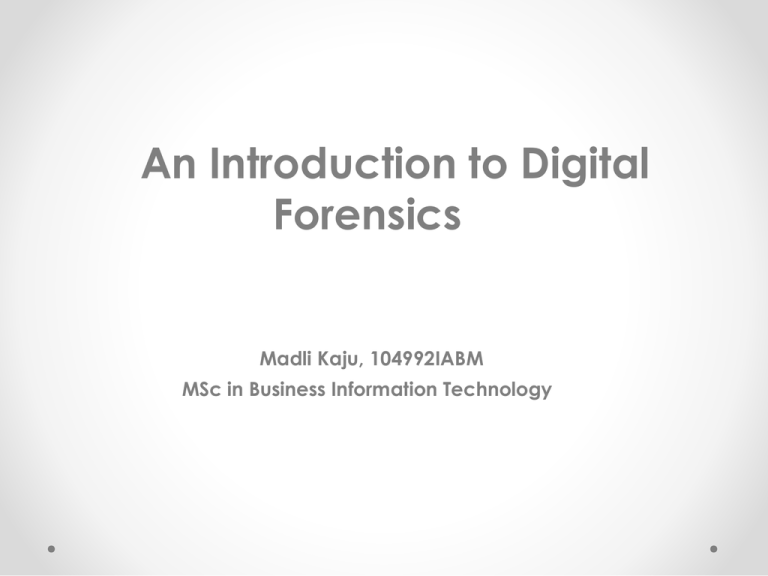
An Introduction to Digital Forensics Madli Kaju, 104992IABM MSc in Business Information Technology Agenda Introduction Approach and process of Digital Forensics Digital Forensics tools State of play of Digital Forensics Conclusion Digital Forensics is processes of analysing and evaluating digital data as evidence The science of locating, extracting and analysing different types of data from different devices, which specialists then interpret to server as legal evidence (Marcella, Menendez 2008) The practice of scientifically derived and proven technical methods and tools toward the preservation, collection, validation, identification, analysis, interpretation, documentation and presentation of after-the-fact digital information derived from digital sources for the purpose of facilitating or furthering the reconstruction of events as forensic evidence (Willassen, Mjolsnes 2005) After 40 years of history, Digital Forensics is heading towards a crisis Early years (1970s1990s) •Hardware, software, and application diversity •A proliferation of data file formats •Heavy reliance on time-sharing and centralized computing facilities •Absence of formal process, tools, and training „Golden years“ Era of crisis (1990s-2000s) (2010s-...) •The widespread use of Microsoft Windows, and specifically Windows XP •Relatively few file formats of forensic interest •Examinations largely confined to a single computer system belonging to the subject of the investigation •Storage devices equipped with standard interfaces (IDE/ ATA) Source: Garfinkel, SimsonL., „Digital Forensics Research: The Next 10 years“, 2010 •Growing size of storage devices •Increasing prevalence of embedded flash storage •Proliferation of hardware interfaces •Proliferation of operating systems and file formats •Pervasive encryption •Use of the “cloud” for remote processing and storage, splitting a single data structure into elements Agenda Introduction Approach and process of Digital Forensics Digital Forensics tools State of play of Digital Forensics Conclusion Digital Forensics consists of various steps and techniques The process of digital forensics is typically as follows: Preservation of the state of the device Survey and analysis of the data for evidence Event reconstruction Main techniques used are forensic duplication and live incident response Forensic investigation Forensic duplication Live incident response Agenda Introduction Approach and process of Digital Forensics Digital Forensics tools State of play of Digital Forensics Conclusion Several commercial and open source tools for digital forensics are available Commerical EnCase Open source DFF FTK LiveView Helix The Sleuth Kit ... ... Agenda Introduction Approach and process of Digital Forensics Digital Forensics tools State of play of Digital Forensics Conclusion Digital Forensics tools have not kept up with technology and cyber crime Current digital forensics tools were designed to help examiners find specific evidence, not to assist in investigations for solving crimes committed against people where the evidence is located on a computer, not to assist in solving typical crimes committed with computers or against computers Today's tools cannot deal with increasing complexity arising due to the cloud era Source: Garfinkel, SimsonL., „Digital Forensics Research: The Next 10 years“, 2010 Agenda Introduction Approach and process of Digital Forensics Digital Forensics tools State of play of Digital Forensics Conclusion Conclusion Digital forensics is important for solving crimes with digital devices against digitial devices against people where evidence may reside in a device Several sound tools and techniques exist to search and analyse digital data Regardless of existing tools, evolving digital age and development of technology requires heavier research in digital forensics Thank you for your attention!
